
Bahadur Shah II, usually referred to by his poetic title Bahadur Shah Zafar, was the twentieth and last Mughal Emperor as well as an Urdu poet. He was the second son and the successor to his father, Akbar II, who died in 1837. He was a titular Emperor, as the Mughal Empire existed in name only and his authority was limited only to the walled city of Old Delhi (Shahjahanbad). Following his involvement in the Indian Rebellion of 1857, the British exiled him to Rangoon in the British-controlled Burma in 1858, after convicting him on several charges.

Anglo-Indian people fall into three different groups: people with mixed Indian and British ancestry, people of Indian descent born or living in the United Kingdom, and people of British descent born or living in India. The latter sense is now mostly historical. People fitting the middle definition are more usually known as British Asian or British Indian. This article focuses primarily on the modern definition, a distinct minority community of mixed Eurasian ancestry, whose first language is English.

William Benedict Hamilton-Dalrymple is a Delhi-based Scottish historian and art historian, as well as a curator, photographer, broadcaster and critic. He is also one of the co-founders and co-directors of the world's largest writers festival, the annual Jaipur Literature Festival.

Major-General Sir David Ochterlony, 1st BaronetGCB was a Massachusetts born military officer of the East India Company in British India. He held the powerful post of British Resident to the Mughal court at Delhi.

Joanna Nobilis Sombre, popularly known as Begum Samru, a convert Catholic Christian started her career as a nautch (dancing) girl in 18th century India, and eventually became the ruler of Sardhana, a small principality near Meerut. She was the head of a professionally trained mercenary army, inherited from her European mercenary husband, Walter Reinhardt Sombre. This mercenary army consisted of Europeans and Indians. She is also regarded as the only Catholic ruler in India, as she ruled the principality of Sardhana in 18th- and 19th-century India.

The Bibi Ka Maqbara is a tomb located in Aurangabad, Maharashtra, India. It was commissioned in 1660 by the Mughal emperor Aurangzeb's son prince Azim Shah in the memory of his loving mother Dilras Banu Begum. It bears a striking resemblance to the Taj Mahal, the mausoleum of Aurangzeb's mother, Mumtaz Mahal. Aurangzeb was not much interested in architecture though he had commissioned the small, but elegant, Pearl Mosque at Delhi. Bibi Ka Maqbara is the second largest structure that Aurangzeb has built, the largest being the Badshahi Mosque.
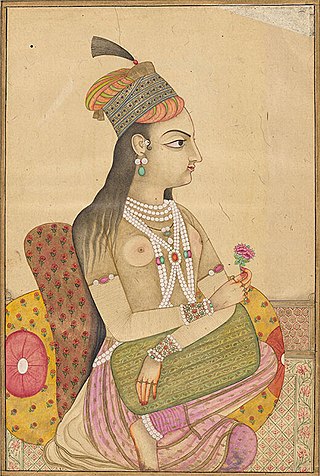
Zeb-un-Nissa was a Mughal princess and the eldest child of Emperor Aurangzeb and his chief consort, Dilras Banu Begum. She was also a poet, who wrote under the pseudonym of "Makhfi".
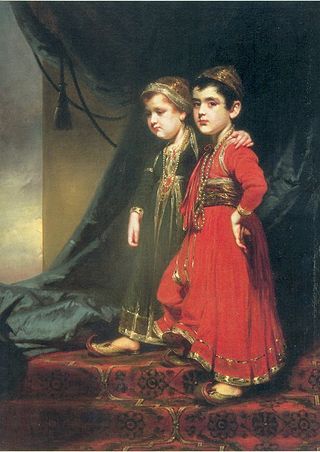
Katherine Aurora "Kitty" Kirkpatrick was a British woman of Anglo-Indian descent best known as a muse of the Scottish philosopher Thomas Carlyle. Born in India to a British father and an Indian mother, Kirkpatrick moved to England at a young age. She met Carlyle and served as his muse for several of his novels. Kirkpatrick's story has been the subject of renewed interest by 21st-century historians, most notable William Dalrymple.
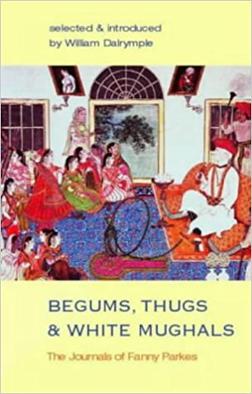
Begums, Thugs and White Mughals: The Journals of Fanny Parkes is a 2002 historical travel book based on the journals of Fanny Parkes and edited by William Dalrymple.

Khairatabad is a neigbbourhood in Hyderabad, Telangana, India. It is a mandal in the Secunderabad Revenue division of Hyderabad District. This is a Zone in the Greater Hyderabad Municipal Corporation. There are five circles in this zone namely Mehdipatnam (12), Karwan (13), Goshamahal (14), Khairatabad (17) and Jubilee Hills (18). There are four wards under this Khairatabad circle, they are Khairtabad (91), Somajiguda (97), Ameerpet (98) and Sanathnagar (100).

Lieutenant-Colonel James Achilles Kirkpatrick was an East India Company officer and diplomat who served as the Resident at Hyderabad Deccan from 1798 until 1805. Kirkpatrick also ordered the construction of the Koti Residency in Hyderabad, which has since come to serve as a major tourist attraction.

Koti Residency or British Residency or "Hyderabad Residency" is an opulent mansion built by James Achilles Kirkpatrick in the princely state of Hyderabad. Kirkpatrick was British Resident of Hyderabad between 1798 and 1805. It is a minor tourist attraction located in the suburb of Koti, Hyderabad.
William Linnæus Gardner (1770–1835), was an officer in the British Indian Army, known for raising 2nd Lancers in 1809 and for his marriage to an Muslim Indian princess.

St. John's Church, originally a cathedral, was among the first public buildings erected by the East India Company after Kolkata (Calcutta) became the effective capital of British India. It is located at the North-Western corner of Raj Bhavan, and served as the Anglican Cathedral of Calcutta till 1847, when the see was transferred to St. Paul's Cathedral. Construction of the building, modelled on St Martin-in-the-Fields of London, started in 1784, with Rs 30,000 raised through a public lottery, and was completed in 1787. The land the church stands on was gifted by Maharaja Nabo Kishen Bahadur of Sobhabazar. It is the third oldest church in the city, next to the Armenian Church of the Holy Nazareth and the Old Mission Church.
Zubdat-un-Nissa Begum was a Mughal princess, the third daughter of Emperor Aurangzeb and his wife Dilras Banu Begum.
Mihr-un-Nissa Begum, meaning "Sun among women", was a Mughal princess, the fifth daughter of Mughal Emperor Aurangzeb and his consort Aurangabadi Mahal.
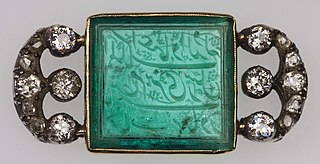
Sir Henry Russell, 2nd Baronet (1783–1852), was the son of Sir Henry Russell, 1st Baronet and his wife, Anne Barbara Whitworth 1763-1814.
Shakr-un-Nissa Begum, also Shakr al-Nisa Begum was a Mughal princess, the daughter of Emperor Akbar.

William Kirkpatrick (1754–1812) was an East India Company officer, diplomat and orientalist active in Colonial India during the period of Company rule.
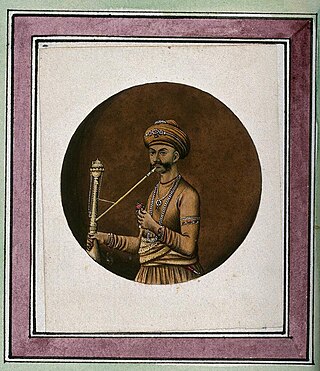
Nawab Diler Himmat Khan, commonly known by his regnal name Muzaffar Jang (1771-1796) was the fourth Nawab or ruler of Farrukhabad, a kingdom in India. He succeeded his father Ahmad Khan Bangash as the ruler in 1771.
















